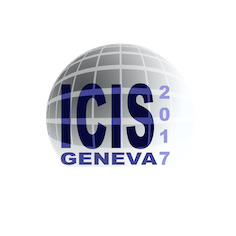Speaker
Description
An ion source called NIO1 (Negative Ion Optimization, phase 1) has been developed by Consorzio RFX and INFN-LNL and is currently in operation in the Consorzio RFX premises in Padova. NIO1 has a radio frequency (RF) inductively coupled (IC) ion source designed to produce a total of 130 mA $\text{H}^-$ current and to accelerate the ions up to energy of 60 keV; it operates at a frequency of 2 ± 0.2 MHz with maximum RF power of 2.5 kW.
In the IC RF ion source, plasma is generated and heated in a component called driver by the RF field induced by a coil. In a preliminary work, a methodology was developed to evaluate the equivalent electrical parameters for IC RF ion sources and power transfer efficiency to the plasma. This methodology takes into account various relevant mechanisms of plasma particle dynamics like ohmic heating, stochastic heating and classical skin depth, which are modelled based on the available literature. These formulations are then integrated with a simplified scheme describing the magnetic coupling between plasma and the RF coil (2-windings transformer model).
In order to develop the methodology further, this work provides an improved equivalent electrical model of the driver based on a multiple winding transformer scheme accounting for the mutual coupling between the RF coil, plasma and the surrounding metallic structures. The developed methodology is then applied to NIO1 ion source. The results in terms of equivalent electrical parameters and power transfer efficiency will be presented based on both the simplified and the improved approach.
Acknowledgements:
This work has been carried out within the framework of the EUROfusion Consortium and has received funding from the Euratom research and training programme 2014-2018 under grant agreement No 633053. The views and opinions expressed herein do not necessarily reflect those of the European Commission.
